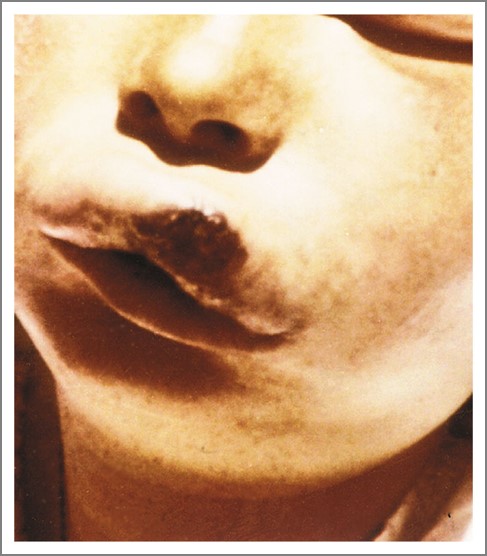Results

#1. This appearance most typically follows treatment with which medication?
The pictured patient has lipodystrophy associated with an HIV-protease inhibitor.

#2. The pupils of this female smoker were unresponsive to light and accommodation. She had noted weight loss and postural hypotension and was found to have an irregular centimeter-sized nodule in the right middle lobe. A test for which one of the following would most likely lead to the diagnosis?
A screen for antineuronal antibodies identified anti-Hu; the patient was found to have a pulmonary neuroendocrine tumor. Anti-Hu antibodies are associated with irregular, asymmetric pupils that are unresponsive to light and accommodation.

#3. What is the diagnosis?
This is a large inguinal hernia that had been enlarging for eight years.

#4. A 25-year-old bodybuilder presented with a tender, erythematous mass in the left upper arm. What is the most likely diagnosis?
This abscess developed following injection of a steroid preparation. Analysis of a deep wound swab revealed methicillin-resistant Staphylococcus aureus.

#5. This patient’s appearance is a consequence of what surgery?
This patient had undergone open gastric bypass for morbid obesity two years previously. His appearance is a result of massive weight loss.

#6. This lesion developed after the patient consumed raw meat from a sick goat. What is the most likely diagnosis?
This lesion was found to be anthrax of the upper lip.

#7. This 38-year-old woman developed recurrent right-sided chest pain synchronously with her menses. What is the most likely diagnosis?
Her chest radiography demonstrated pneumothorax; endometrial deposits were identified during thoracoscopy implicating catamenial pneumothorax as the cause of her chest pain.

#8. What is the diagnosis?
Cardiac tamponade resolved after removal of 6 liters of pus from the right chest.

#9. What is the diagnosis?
The fundoscopic image suggests florid papilledema.

#10. This plantar lesion was associated with inguinal lymphadenopathy. What is the most likely diagnosis?
Histopathologic examination revealed this to be an amelanotic malignant melanoma.






